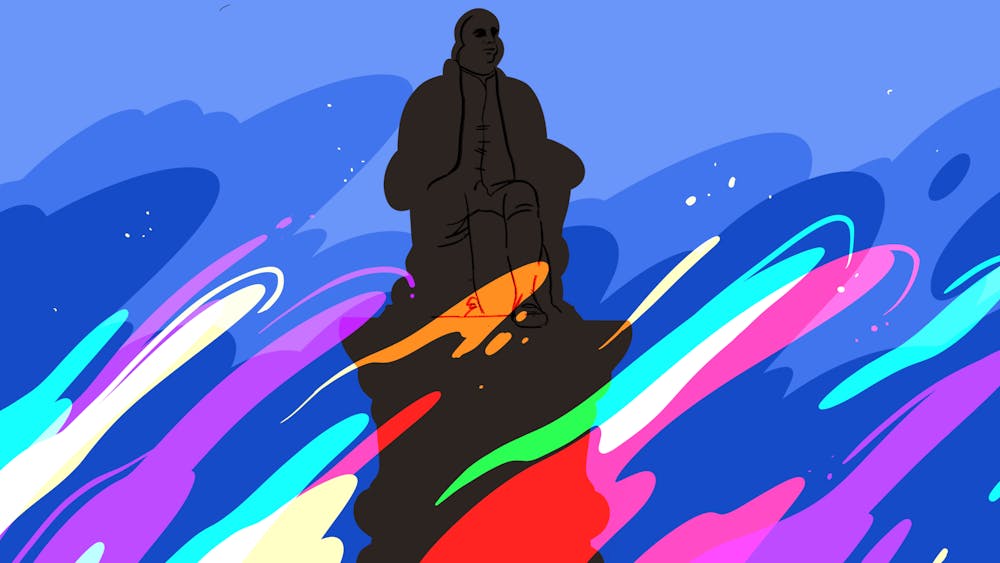Last semester I was scrolling through Instagram stories when, among the mind–numbing piles of reposts and sports updates, something caught me by surprise—something that triggered a very deep emotional reaction that I couldn't quite explain. Was it a flashy news headline filled with tragedy? A gut–wrenching story about love? A nihilistic look at the climate crisis?
Nope, none of those things. It was actually a video of one of my friends back home in India, Shaurya, chasing another friend of mine, Vivek, with a stone in his hand, ready to throw. Meanwhile, Vivek, begging for mercy, ran for his life. As gruesome as that dramatized description sounds, it was surprisingly familiar to me. We used to do stupid antics like that all day: messing around, pulling stunts, and having a blast.
I laughed at that video for five minutes straight, rewatching it. Suddenly, the realization that I wasn't there hit me like a truck. I was 12,655 kilometers away, watching through a tiny screen, in a land where the metric units don't make sense. My amusement vanished and for the first time, I was overwhelmed by this mysterious dread.
I've always thought of myself as distant, from everyone and everything. I thought of sentimental attachments as burdens, waiting to be shed. I always thought of myself as an outsider. So when I came here, I ignored anything that made me feel different.
The only other time I’ve felt that dread has been when I was laughed at for my accent or ridiculed for not being culturally literate. I often jokingly describe it like this: "You know you're far from home when your roommate is your emergency contact."
That dread came and went. It was only when March 2022 rolled around that it sank in once again. This time the culprit was posts about Holi, the Indian festival of colors, where for one day each year everyone would come together and smear each others' faces with powder. It was messy and borderline chaotic. I loved it. It was that festival that I look forward to all year, eagerly waiting to dunk my friends in the water and show them who’s boss.
I hadn't celebrated Holi in three years. Two of the celebrations had been canceled due to COVID–19. It was in my senior year of high school when Holi got canceled that it hit the hardest. I knew I was going away and it was going to be the last one, and I was left wondering when I'd celebrate again—hopefully in a few years?
Then, the Hindu and Jain Association and Class Boards announced that they'd be holding a celebration in the spring of 2022.
When I arrived at Holi, I expected a few Indian people to show up, throw a couple of packets of powder here and there, and be done in five minutes. What I found was hundreds of Penn students from all years in—quite possibly, the most diverse group I'd ever seen. There were performances, music, dancing, and a whole lot of color.
People that I hadn’t seen since New Student Orientation came up to me and wished me happy Holi. There was Hindi music—the same cliché Holi songs I’d groan at when DJs played them back in India were suddenly my jam. And not just mine—everyone, regardless of whether they understood the language or had even heard about Holi beforehand, was jamming, as College Green became a mosh pit of kaleidoscopic people. It was in that crowd, dancing to cheesy Bollywood music with people I’d never met, that for a brief moment, I felt at home.
In India, every single person I knew was Indian. I’d never really interacted with anyone that didn’t look like me or didn’t grow up in India. So when I came here, I made a conscious decision to interact with people from as many backgrounds as possible.
Everyone, regardless of religion or background, came together to celebrate a festival that I felt so deeply connected with. As cringey and cliché as it sounds, I realized home isn’t where you are or where you’re from—it’s who you’re with. And if Penn students can smear each others’ faces with color, just like my friends in India, maybe I’m not that far from home after all.

